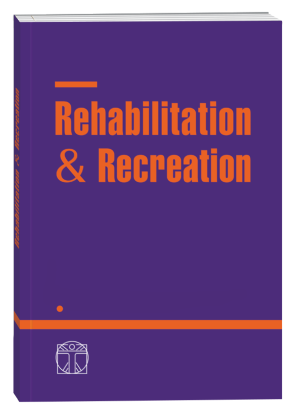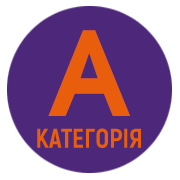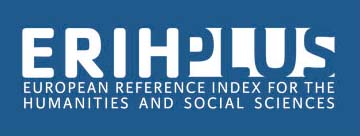КОЛИВАННЯ АРТЕРІАЛЬНОГО ТИСКУ ПІД ЧАС ВИКОНАННЯ ВПРАВ З ВОДНОЇ ХОДЬБИ ЗА РІЗНИХ ТЕМПЕРАТУРНИХ РЕЖИМІВ
DOI:
https://doi.org/10.32782/2522-1795.2024.18.4.2Ключові слова:
ходьба у воді, артеріальний тиск, температура, студенти коледжу, програма вправАнотація
Вступ. Регулярна фізична активність має вирішальне значення для здоров’я серцево-судинної системи, а ходьба у воді стає все більш корисною вправою, хоча вплив температури на артеріальний тиск усе ще не досить вивчений. Мета. Метою цього дослідження є вивчення впливу вправ з ходьби у воді за різної температури води на артеріальний тиск у студентів коледжу, а також оцінка того, який температурний діапазон забезпечує найбільш значущі переваги для серцево-судинної системи. Матеріал і методи. Сорок п’ять студентів чоловічої статі з Інституту науки і технологій імені Шрі Рамасвамі, Індія, взяли участь у 6-тижневих заняттях водною ходьбою. Учасники були випадковим чином розподілені в одну з трьох груп, кожна з яких займалася за різної температури води в басейні: 24–28°C, 28–32°C та 32–36°C. Заняття водною ходьбою проводили тричі на тиждень, а також реєстрували показники артеріального тиску (систолічного та діастолічного) до та після втручання. Статистичний аналіз включав парні t-тести для оцінки внутрішньогрупових відмінностей та ANOVA для оцінки міжгрупових варіацій. Результати. Помітне зниження систолічного та діастолічного артеріального тиску було зафіксоване в усіх температурних групах. Група 24–28°C продемонструвала найсуттєвіше зниження систолічного тиску (середнє зниження на 5,467 мм рт. ст., t = 3,21, p < 0,01). Результати ANOVA показали статистично значущий вплив температури на зниження артеріального тиску в усіх групах (F = 4,37, p < 0,05), причому холодніші температури сприяли більшому зниженню як систолічного, так і діастолічного артеріального тиску. Висновки. Ходьба у воді за прохолодної температури покращує діяльність серцево-судинної системи, ефективно знижуючи артеріальний тиск у студентів коледжів. Ці дані свідчать, що більш низька температура води може оптимізувати користь для здоров’я від фізичних вправ у воді, пропонуючи цінну стратегію втручання для управління артеріальним тиском.
Посилання
1. Igarashi, Y. (2023). Effects of differences in exercise programs with regular resistance training on resting blood pressure in hypertensive adults: A systematic review and meta-analysis. Journal of Strength and Conditioning Research, 37(1), 253–263. https://doi.org/10.1519/JSC.0000000000004236.
2. Edwards, J.J., Deenmamode, A.H.P., Griffiths, M., et al. (2023). Infographic. Exercise training and resting blood pressure: A largescale pairwise and network meta-analysis of randomised controlled trials. British Journal of Sports Medicine, 57, 1335–1336. https://doi.org/10.1136/bjsports-2023-107513.
3. Lee, S.Y., Im, S.H., Kim, B.R., & Han, E.Y. (2018). The effects of a motorized aquatic treadmill exercise program on muscle strength, cardiorespiratory fitness, and clinical function in subacute stroke patients: A randomized controlled pilot trial. American Journal of Physical Medicine & Rehabilitation, 97(8), 533–540. https://doi.org/10.1097/PHM.0000000000000920.
4. McGavock, J., Brunton, N., Klaprat, N., Swanson, A., Pancoe, D., Manley, E., Weerasinghe, A., Booth, G.L., Russell, K., Rosella, L., et al. (2019). Walking on water – A natural experiment of a population health intervention to promote physical activity after the winter holidays. International Journal of Environmental Research and Public Health, 16, 3627. https://doi.org/10.3390/ijerph16193627.
5. Chernyshev, V.V., Pryanichnikov, V.E., Arykantsev, V.V., Vershinina, I.P., & Kalinin, Y.V. (2019). Research of the walking type of movement in underwater conditions. In OCEANS 2019 – Marseille. Pp. 1–6. https://doi.org/10.1109/OCEANSE.2019.8867233.
6. Asami, T., Hotta, K., Ishii, Y., Sakai, W., Kojima, S., Morishita, S., & Tsubaki, A. (2020). Temperature and blood flow changes in the big toe skin of the stationary leg during single-leg pedaling exercises. Rigakuryoho Kagaku, 35(5), 693–698. https://doi.org/10.1589/rika.35.693.
7. Sanjaykumar, S., Rajkumar, N.C.J., & Lakshmi, P.Y. (2023). Impact of varied temperature living conditions, stress levels, and sleeping duration on oligomenorrhea: A comprehensive study among women. Physical Rehabilitation and Recreational Health Technologies, 8(4), 183–187. https://doi.org/10.15391/prrht.2023-8(4).02.
8. Kenney, W.L., Wolf, S.T., Dillon, G.A., Berry, C.W., & Alexander, L.M. (2021). Temperature regulation during exercise in the heat: Insights for the aging athlete. Journal of Science and Medicine in Sport, 24(8), 739–746. https://doi.org/10.1016/j.jsams.2020.12.007.
9. Peel, J.S., McNarry, M.A., Heffernan, S.M., Nevola, V.R., Kilduff, L.P., & Waldron, M. (2021). The effect of dietary supplements on endurance exercise performance and core temperature in hot environments: A metaanalysis and meta-regression. Sports Medicine, 51(11), 2351–2371. https://doi.org/10.1007/s40279-021-01500-2
10. Zhang, J., Liu, H., & Dai, W. (2023). Effects of exercise on human energy metabolism in high temperature and high humidity environment. Revista Brasileira de Medicina do Esporte, 29, Article e2022_0784. https://doi.org/10.1590/1517-8692202329012022_0784.
11. Farinha, C., Teixeira, A.M., Serrano, J., Santos, H., Campos, M.J., Oliveiros, B., Silva, F.M., Cascante-Rusenhack, M., Luís, P., & Ferreira, J.P. (2021). Impact of different aquatic exercise programs on body composition, functional fitness, and cognitive function of noninstitutionalized elderly adults: A randomized controlled trial. International Journal of Environmental Research and Public Health, 18, 8963. https://doi.org/10.3390/ijerph18178963.
12. Waffak, M.N., Sukoco, P., & Sugiyanto, F. (2022). The effect of water exercise and sand exercise training methods on agility in basketball athletes. Health, Sport, Rehabilitation, 8(2), 42–52. https://doi.org/10.34142/HSR.2022.08.02.04.
13. Moreira, N.B., da Silva, L.P., & Rodacki, A.L.F. (2020). Aquatic exercise improves functional capacity, perceptual aspects, and quality of life in older adults with musculoskeletal disorders and risk of falling: A randomized controlled trial. Experimental Gerontology, 142, 111135. https://doi.org/10.1016/j.exger.2020.111135.
14.Honório, S.A.A., Mendes, P.D.M., Batista, M., Serrano, J., Duarte, R.M., Oliveira, J., & Petrica, J. (2018). Effects of swimming and water walking on body composition and spirometric values in young children. NeuroRehabilitation, 43(2), 237–245. https://doi.org/10.3233/NRE-182422.
15. Bailly, M., Fillon, A., Bonjean, L., Lucas, D., Kabani, C., Chipon, S., Pereira, B., Duclos, M., Verney, J., & Thivel, D. (2022). Aqua walking as an appropriate and healthy winter and summer physical practice? An exploratory study. Healthcare, 10, 1258. https://doi.org/10.3390/healthcare10071258.
16. Palani, B., Raj, Y.C.L., Kalmykova, Y., Sanjaykumar, S., & Korsun, S. (2024). The effectiveness of a 12-week sport nutrition education intervention on female volleyball players performance. Physical Rehabilitation and Recreational Health Technologies, 9(3). https://doi.org/10.15391/prrht.2024-9(3).05.
17. Matsuda, T., & Akezaki, Y. (2017). Effects of aquatic walking exercise using a walker in a chronic stroke patient. Journal of Physical Therapy Science, 29(7), 1268–1271. https://doi.org/10.1589/jpts.29.1268.
18. Tanabe, N., Nishioka, Y., Imashiro, K., Hashimoto, H., Kimura, H., Taniguchi, Y., Nakai, K., Umemoto, Y., Kouda, K., Tajima, F., & Mikami, Y. (2023). Comparative study of muscle hardness during water-walking and land-walking using ultrasound real-time tissue elastography in healthy young people. Journal of Clinical Medicine, 12(4), 1660. https://doi.org/10.3390/jcm12041660.
19. Masumoto, K., Takasugi, S., Hotta, N., Fujishima, K., & Iwamoto, Y. (2004). Electromyographic analysis of walking in water in healthy humans. Journal of Physiological Anthropology and Applied Human Science, 23(4), 119–127. https://doi.org/10.2114/jpa.23.119.
20. Cugusi, L., Meloni, M., Bergamin, M., et al. (2023). Health effects of outdoor water sports in chronic disease: A scoping review. Sport Sciences for Health, 19, 1–15. https://doi.org/10.1007/s11332-022-00989-y.
21. Gallo-Silva, B., Cerezer-Silva, V., Ferreira, D.G., Sakabe, D.I., Kel-Souza, L.D., Bertholo, V.C., Brasil, M.T.F., & Moreno, M.A. (2024). Effect of water exercise on the respiratory function and functional capacity of patients with COPD: A randomized controlled trial. Fisioterapia em Movimento, 37, e37121. https://doi.org/10.1590/FM.2024.37121.
22. Green, D.J., Smith, K., Maslen, B.A., Cox, K.L., Lautenschlager, N.T., Pestell, C.F., Naylor, L.H., Ainslie, P.N., & Carter, H.H. (2021). The impact of 6-month land versus water walking on cerebrovascular function in the aging brain. Medicine & Science in Sports & Exercise, 53(10), 2093–2100. https://doi.org/10.1249/MSS.0000000000002685.
23. Li, D., Zhang, Q., Liu, X., Chen, C., Lu, J., Ye, D., Li, Y., Wang, W., & Shen, M. (2019). Effect of water-based walking exercise on rehabilitation of patients following ACL reconstruction: A prospective, randomised, single-blind clinical trial. Journal of Human Sport and Exercise, 14(Proc1), 47–58. https://doi.org/10.14198/jhse.2019.14.Proc1.07.
24. Naylor, L.H., Maslen, B.A., Cox, K.L., Spence, A.L., Robey, E., Haynes, A., Carter, H.H., Lautenschlager, N.T., Ridgers, N.D., Pestell, C., & Green, D.J. (2020). Land-versus water-walking interventions in older adults: Effects on body composition. Journal of Science and Medicine in Sport, 23(2), 164–170. https://doi.org/10.1016/j.jsams.2019.08.289.
25. Hurd, R.C., Belden, J., Bower, A.F., et al. (2019). Water walking as a new mode of free surface skipping. Scientific Reports, 9, 6042. https://doi.org/10.1038/s41598-019-42453-x.
26. Green, D.J., Silva, G.O., Smith, K.J., Maslen, B.A., Cox, K.L., Lautenschlager, N.T., Pestell, C.F., Ainslie, P.N., Haynes, A., & Naylor, L.H. (2024). Impact of water- and land-based exercise training on risk factors and vascular function in middle-aged and older men and women. Medicine & Science in Sports & Exercise, 56(2), 230–237. https://doi.org/10.1249/MSS.0000000000003302.
27. Skalski, D.W., Kreft, P., Czarnecki, D., Vynogradskyi, B., Kowalski, D., Zarichanska, L., & Kozachok, N. (2022). Aktywność fizyczna w środowisku wodnym. Rehabilitation and Recreation, 13, 140–146. https://doi.org/10.32782/2522-1795.2022.13.19.
28. Sivaraman, C., Rajkumar, N.C.J., Salini, B., Boby, F.A., & Sanjaykumar, S. (2024). A multivariate regression analysis of a comprehensiverehabilitationprogramandperformance improvement in young female volleyball players. Physical Rehabilitation and Recreational Health Technologies, 9(4). https://doi.org/10.15391/prrht.2024-9(4).01.
29. Sembaiyan, K., Krishnan, R.M., Sanjaykumar, S., Stadnyk, S., & Okun, D. (2024). Integrative approach of plyometrics and nutritional strategies on vertical jump performance in elite targetball players. Physical Rehabilitation and Recreational Health Technologies, 9(5), 385. https://doi.org/10.15391/prrht.2024-9(5).05.
##submission.downloads##
Опубліковано
Як цитувати
Номер
Розділ
Ліцензія

Ця робота ліцензується відповідно до Creative Commons Attribution-NonCommercial-NoDerivatives 4.0 International License.












